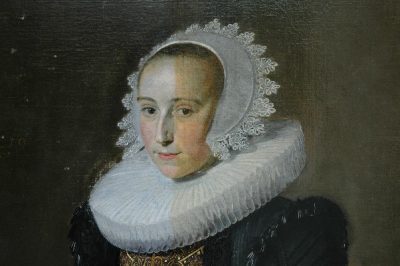Not everyone knows that there is a conservation studio in the Mauritshuis attic. To ensure the collection remains in top condition, a team of in-house conservators dedicates its time to conserving, restoring and examining. In 2020 it will be exactly 25 years since the studio was installed in the attic. An opportune moment to consider the most intriguing restorations of the past twenty years, including paintings by Rembrandt, Vermeer, Hals, Steen and Rubens, but also by some lesser-known artists such as Cornelis de Heem and Jacob Ochtervelt. Restoring centuries-old paintings appeals to the imagination. What does it involve? What can we learn from a restoration? What do paintings look like pre and post restoration? And what have been the most amazing findings?
The Mauritshuis has three paintings by Johannes Vermeer in its collection. The famous paintings Girl with a Pearl Earring and the View of Delft, but also the lesser-known Diana and Her Nymphs. During the restoration of ‘Diana’ in 1999, an examination of the pigments showed that the cloudy sky was not Vermeer’s, but a later addition. After a process of deliberation, it was decided not to remove the later cloudy sky, but to hide it from view. As is customary today, this treatment is reversible. In other words, the thin layer of paint on the sky can be easily stripped off if future generations think differently. The intervention brought the painting back to the painter’s original intention. The scene looks more intimate and the light is more convincing.

[text via codart.nl]